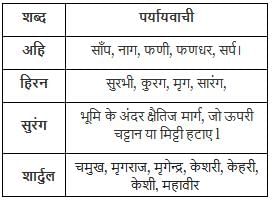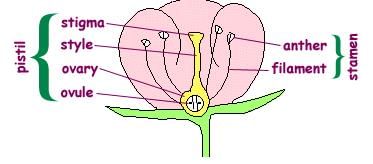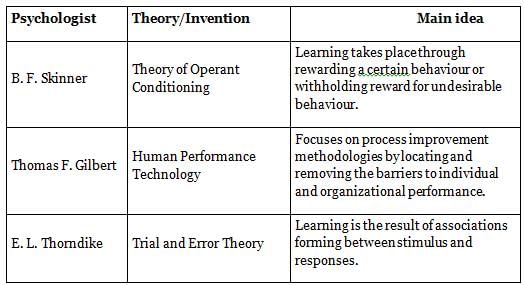REET Level 2 Mock Test - 6 (Science and Mathematics) - REET MCQ
30 Questions MCQ Test - REET Level 2 Mock Test - 6 (Science and Mathematics)
Continuous and comprehensive evaluation includes:
What is the adverse effect of insisting on the same answers from all children?
Which of the following is a true statement corresponding to Cephalocaudal Principle of Child's Development?
Which of the areas of individual differences is most important for organising educational programmes effectively?
Which one of the following reasons is responsible for children to NOT learn critical thinking?
What does the term 'PSRN' in development imply?
A teacher can respond to the interests of children with special needs by:
According to Piaget’s cognitive theory of learning, identify the process among the following by which the cognitive structure is modified.
किसी उत्पाद का इस्तेमाल करके उपभोक्ता भी बाजार में भागीदार बन जाता है। यदि उपभोक्ता नही होंगे तो किसी भी कंपनी का अस्तित्व नही होगा। जहाँ तक उपभोक्ता के अधिकार का सवाल है तो उपभोक्ता की स्थिति दयनीय ही कही जायेगी। इसको समझने के लिए आप वैसे दुकानदार का उदाहरण ले सकते है जो कम वजन तौलता है या वह कम्पनी जो अपने पैक पर झूठे वादे करती है। ज्यादातर मिठाई बेचने वाले कच्चे माल में मिलावट करके लड्डू या बर्फी बनाते है। कुछ वर्षो पहले मिलावटी सरसों तेल से फैलने वाली ड्रॉप्सी नाम की बीमारी आपको याद होगी। यदि आपने कभी ट्रेन से सफर किया होगा तो आपको पता होगा कि ट्रेन में बिकने वाले खाने पीने की ज्यादातर चीजे घटिया होती है। यहाँ तक की पैंट्री में मिलने वाला खाना भी घटिया क्वालिटी का होता है। भारत में मिलावट, कालाबाजारी, जमाखोरी, कम वजन आदि की पुरानी परम्परा रही है। 1960 के दशक से भारत में उपभोक्ता आन्दोलन शुरू हुए थे। 1970 के दशक तक उपभोक्ता आन्दोलन केवल आर्टिकल लिखने और प्रदर्शनी लगाने तक ही सीमित था। लेकिन हाल के वर्षो में उपभोक्ता संगठनों की संख्या में तेजी से उछाल आया है।
विक्रेताओं और सेवा प्रदाताओं से लोगो में इतनी अधिक असंतुष्टि थी कि उपभोक्ताओं के पास अपनी आवाज उठाने के सिवा और कोई रास्ता नही बचा था। कई वर्षो के लम्बे संघर्ष के बाद सरकार को इसकी खैर लेने के लिए बाधित होना पड़ा और इसकी परिणति के रूप में 1986 में कंज्यूमर प्रोटेक्शन एक्ट (कोपरा) को लागू किया गया। एक उपभोक्ता को किसी उत्पाद के बारे में सही जानकारी पाने का अधिकार होता है। अब ऐसे कानून है जो किसी उत्पाद के पैक पर अवयवों और सुरक्षा के बारे में जानकारी देना अनिवार्य बनाते है। सही सूचना से उपभोक्ता को किसी भी उत्पाद को खरीदने के लिए उचित निर्णय लेने में मदद मिलती है। किसी भी उत्पाद के पैक पर खुदरा मूल्य लिखना भी अनिवार्य होता है। यदि कूई दुकानदार एमआरपी से अधिक चार्ज करता है तो उपभोक्ता उसकी शिकायत कर सकता है। एक उपभोक्ता को विभिन्न विकल्पों में से चुनने का अधिकार होता है। कोई भी विक्रेता केवल एक ही ब्रांड पेश नही कर सकता है। उसे अपने ग्राहक को कई विकल्प देने होगे। इस अधिकार को मोनोपोली ट्रेंड के खिलाफ बने कानूनों के जरिये लागू किया जाता है।
Q. अधिकारों के मामले में भारतीय उपभोक्ताओं की स्थिति कैसी है?
निर्देश: दिए गए पद्यांश को पढकर निम्नलिखित प्रश्नों के सही विकल्प छाँटिएI
क्या रोकेंगे प्रलय मेघ ये, क्या विद्युत-धन के नर्तन,
मुझे न साथी रोक सकेंगे, सागर के गर्जन-तर्जन।
मैं अविराम पथिक अलबेला रुके न मेरे कभी चरण,
शूलों के बदले फूलों का किया न मैंने मित्र चयन।
मैं विपदाओं में मुसकाता नव आशा के दीप लिए
फिर मुझको क्या रोक सकेंगे जीवन के उत्थान-पतन,
मैं अटका कब, कब विचलित में, सतत डगर मेरी संबल
रोक सकी पगले कब मुझको यह युग की प्राचीर निबल
आँधी हो, ओले-वर्षा हों, राह सुपरिचित है मेरी,
फिर मुझको क्या डरा सकेंगे ये जग के खंडन-मंडन।
मुझे डरा पाए कब अंधड़, ज्वालामुखियों के कंपन,
मुझे पथिक कब रोक सके हैं अग्निशिखाओं के नर्तन।
मैं बढ़ता अविराम निरंतर तन-मन में उन्माद लिए,
फिर मुझको क्या डरा सकेंगे, ये बादल-विद्युत नर्तन।
Q. प्रस्तुत पद्यांश में कवि के स्वभाव की कौन-सी दो विशेषताओं के विषय में बताया गया है?
निर्देश: निम्नलिखित गद्यांश को ध्यानपूर्वक पढ़िए व प्रश्नों के उत्तर उपयुक्त विकल्पों द्वारा दीजिये-
बारहसिंगा हिरण प्रजाति का बड़े आकार का शानदार वन्य पशु है। इस वन्य जीव को उत्तरप्रदेश की सरकार ने अपना राज्य पशु घोषित कर रखा है। दुर्लभ वन्य जीव होने के कारण इसे संकटग्रस्त सूची में रखा गया है। बारहसिंगा दुधवा राष्ट्र्रीय उद्यान, हस्तिनापुर अभ्यारण्य, असम के काजीरंगा राष्ट्रीय उद्यान और बंगाल के सुंदरवनों में भी पाया जाता है। मध्यप्रदेश के कान्हा राष्ट्रीय उद्यान में भी बारहसिंगा की दूसरी प्रजाति पाई जाती है। बारहसिंगा की कंधे तक की ऊँचाई 135 सेंटीमीटर होती है। इसका वजन लगभग 170 - 180 किलोग्राम तक होता है। यह प्रायः नम दलदली घास वाले क्षेत्रो में रहना पसंद करते है। बारहसिंगा प्रायः समूहों में पाए जाते है। इसके सींग 75 सेंटीमीटर लम्बे होते है। अधिकांश बारहसिंगो के सींगों में 10 से 14 तक शाखाएं होती है। अधिकतम 20 शाखाएँ वाले बारहसिंगा भी देखे गये हैं।
Q. इनमें से 'हिरन' किसका पर्यायवाची है?
राष्ट्रीय शिक्षा नीति, 2020 विदेशी भाषाओं के संबंध में सही कथन का चयन करो?
भाषा की प्रकृति के सम्बन्ध में कौन-सा कथन उचित नहीं है ?
'Teachers should consider a child's prospective learning power before trying to expand the child's grasp of language. 'These are the views of
Which one of the following reasons is responsible for children to NOT learn critical thinking?
The diagonal of a rectangle is 17 cm and its area is 120 cm2. The perimeter of the rectangle is ____
The direction of force acting on a current-carrying conductor placed in a magnetic field is determined by which of the following rules?
Study the following table:

The group in which the parts of stamen and parts of pistil are correctly shown is
The organisers of an essay competition decide that a winner gets a prize of Rs. 100 and a participant who does not win gets a prize of Rs. 25. The total prize money distributed is Rs. 3,000. Find the number of winners, if the total number of participants is 63.
Apart from checking the mathematical concept, what values can a teacher inculcate through this question amongst students, during the discussions?
Which of the following provides quantitative as well as qualitative descriptions of the outcomes of teaching-learning process?
Which of the following(s) is/are the skill of micro-teaching in Mathematics?
i. skill of integrating knowledge and experience
ii. skill of facilitating child-centric learning
iii. skill of developing observation in learners
Identify which among the following can neutralize an acid?
In a mathematics classroom, emphasis is placed on
The teaching-learning process of Science in a classroom at any level of formal education is directed by
What do you mean by objectivity?
Mathematics helped man to discover the mysteries of nature and to overcome superstitions and ignorance. This shows the
The bacteria responsible for fermentation of dairy milk and plant product are
What the main source energy planet earth?
Father of Branching programmed instruction.






















